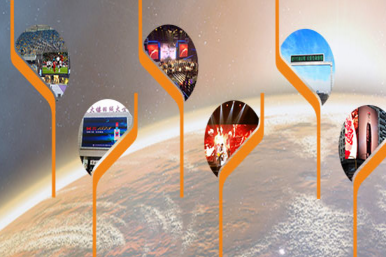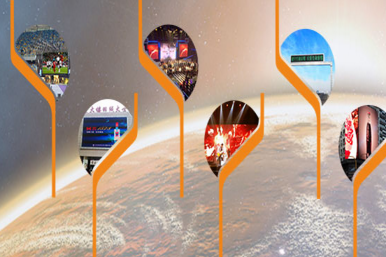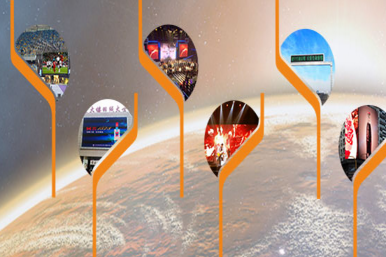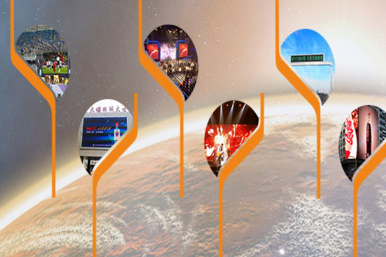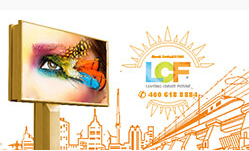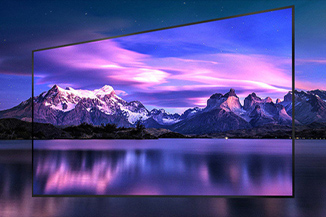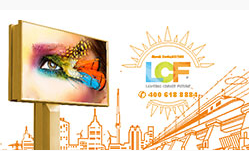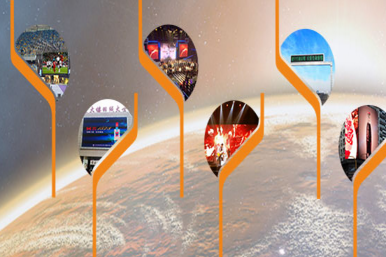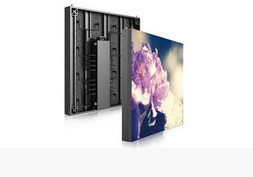Publisher: Supplier of LED Display Time: 2018-10-11 08:55 Views: 4671
With the outbreak of the LED display market, the integration speed of the entire LED industry is also accelerating, the technical threshold of low-end products has been broken, product homogeneity is serious, and price wars one after another. At the same time, the mid-to-high-end small-pitch LED display market ushered in explosive growth. In early 2017, COB and Mini LED appeared on the stage of small-pitch LEDs, which had a certain impact on traditional SMD small-pitch. The market also formed two camps of traditional SMD small-pitch leaders and COB/Mini LED small-pitch new players. Therefore, display companies that closely follow the development trend of the industry and make early technology and market layouts are bound to enjoy the first mover dividend.
Regarding the point spacing: there is no minimum, only smaller
In the same display area, the smaller the lamp beads and spacing, the more the number of lamp beads, and the cost increases geometrically. Compared with traditional LED display products, small-pitch LEDs have higher barriers, higher contrast, lower defective pixel rate (lower maintenance frequency), smaller lamp bead pitch (pixel density, PPI), and higher resolution. As well as lighter and thinner, sun-proof, moisture-proof and impact-resistant, interface standardization, etc., are all important factors affecting the popularization of small spacing.
With the continuous advancement of packaging technology, all-in-one SMD, formal COB, flip-chip COB and other technologies will mature and be applied. LED display beads and spacing will continue to shrink, performance will continue to improve, and semiconductor technology will develop rapidly. , To promote the continued decline in the price of LED display products. In the future, MiniLED and MicroLED display products with higher pixel density are expected to be applied on a large scale in the civilian market. Among them, Lianchengfa, a comprehensive manufacturer in the field of LED optoelectronics, is actively deploying product R&D and innovation, and has made a phased breakthrough in mini-LED display technology-from samples to batch trial production, products are successfully launched on the market!
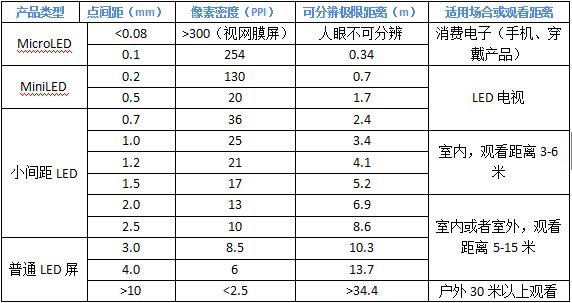
Application areas: from exclusive display to commercial display to civilian use
The manufacture of LED display requires not only the technology and production capacity of LED chips and lamp beads, but also the supporting supply of various materials and components such as PCB, drive circuit and power supply, metal or carbon fiber frame, backed by the largest small pitch lamp beads. In the demand market, domestic small-pitch lamp bead packaging manufacturers, National Star Optoelectronics and Dongshan Precision, have natural advantages. Therefore, from a global perspective, mainland China is the only region with complete industrial supporting facilities, and Chinese LED screen companies have a great competitive advantage in this regard.
In recent years, with the maturity of LED small-pitch display technology, innovations in operating models in many fields, including movies, advertising, sports, and entertainment, will continue to promote the upward trend of the small-pitch boom. Although the small-pitch LED has achieved rapid development in recent years, its application field is still mainly in the professional display market, in which the government, public security, energy, transportation and other departments occupy an absolute share.
The commercial market is larger than the professional display market. For example, in the segment of the commercial market, the annual market space of movie screens will be 3 billion yuan in the future. In the future, as technology advances, we will gradually solve some of the current problems of small-pitch LEDs (such as high dead-light rate that requires maintenance, and pixel density that cannot meet the needs of some fields). We can expect that small-pitch LEDs will increase at a faster speed. It replaces DLP and LCD splicing screens in the dedicated display field, and has exploded in the commercial market, and will gradually enter the civilian market with more space in the future.
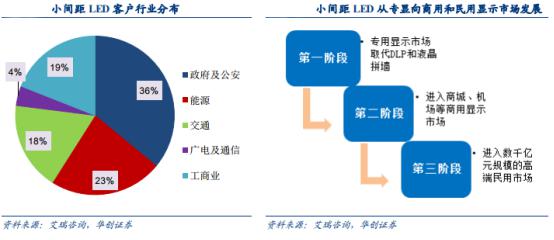
The small pitch market is expected to maintain a high growth rate of more than 50% in the next three years. Domestic screen companies such as Leyard, Unilumin Technology, and Lianchengfa are expected to benefit deeply from industry growth. At this time, the best way for manufacturers to improve their competitiveness is to open up channels for low-end products and provide differentiated services for high-end products. In addition, despite the decline in the price of low-end products, the proportion of small-pitch and high-density products has gradually increased, driving up the average price of products. In the future, screen companies are expected to usher in both volume and price increases.
Future trend: small pitch → MiniLED → MicroLED
The continuous upgrading of LED display technology has promoted a substantial increase in the performance of mainstream products in the market. The current small-pitch product with the largest market share is already P1.5 (lamp bead spacing 1.5mm). P1.2 will surpass P1.5 to become the product with the highest proportion in 2018, and P0.7 is already in small-scale mass production. But the cost is still relatively high and the technology is not mature.
As for the Mini LED, it is an improved version of the LED backlight, which can greatly enhance the effect of the existing LCD screen. At the same time, the cost is relatively easy to control, and it is also expected to become the mainstream of the market. Although it appeared relatively late, the development is extremely rapid. Many manufacturers around the world have actively developed Mini LED related applications. Chip manufacturers include Jingdian, Longda, Sanan, Huacan, etc.; packaging plants include Yiguang, Rongchuang, Hongqi, Seoul Semiconductor, etc.; IC design plants include Macroblock, Ruiding, etc.; panel manufacturers include AUO and Innolux; display manufacturers include Leyard and Lianchengfa, etc. It can be said that the entire industry has been linked.
From the structural principle, Micro LED is simpler and has better effect. TFT substrates, ultra-micro LED dies, and driver ICs are not major problems, but it still has a large number of transfers, repairs, light color consistency, etc. difficulty. Compared with MicroLED, Mini LED is theoretically less technically difficult, easier to achieve mass production, and can develop a large number of LCD backlight market, and the product economy is better. It is predicted that by 2025, MicroLED display market shipments will reach 330 million pieces, and the market output value will reach 2.891 billion US dollars.
So how long can MiniLED survive? This mainly depends on when the MicroLED erupts. Generally speaking, Micro LED will have a qualitative improvement in terms of picture quality. It is the next generation of revolutionary display technology. However, the current technology is still not mature enough. From the perspective of the overall market space, Micro LED is indeed very beautiful, and of course it is very beautiful. Far. Therefore, screen companies need to continuously invest in research and development in order to maintain market competitiveness and occupy a place in the high-end market.
